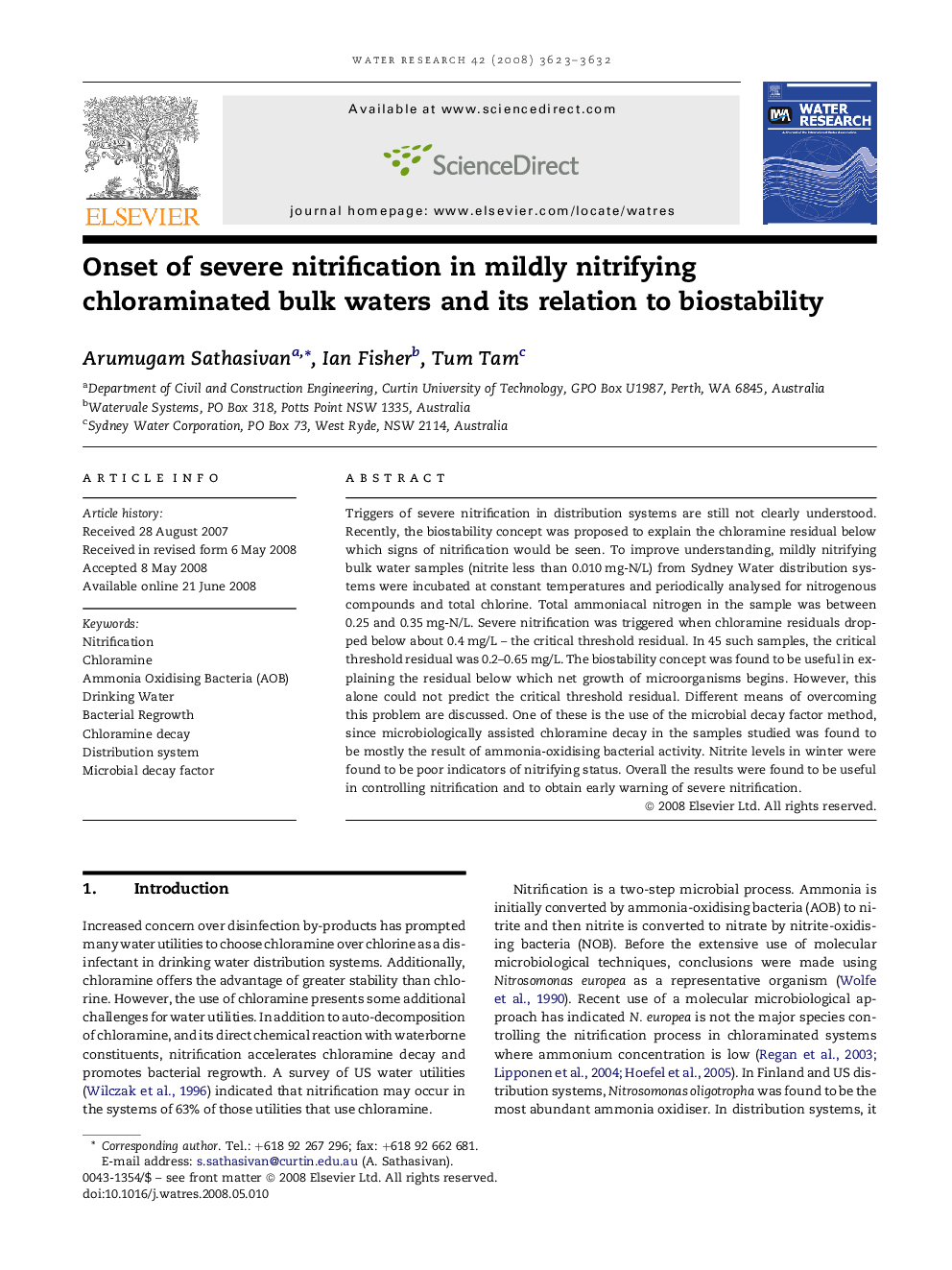| Article ID | Journal | Published Year | Pages | File Type |
|---|---|---|---|---|
| 4485953 | Water Research | 2008 | 10 Pages |
Triggers of severe nitrification in distribution systems are still not clearly understood. Recently, the biostability concept was proposed to explain the chloramine residual below which signs of nitrification would be seen. To improve understanding, mildly nitrifying bulk water samples (nitrite less than 0.010 mg-N/L) from Sydney Water distribution systems were incubated at constant temperatures and periodically analysed for nitrogenous compounds and total chlorine. Total ammoniacal nitrogen in the sample was between 0.25 and 0.35 mg-N/L. Severe nitrification was triggered when chloramine residuals dropped below about 0.4 mg/L – the critical threshold residual. In 45 such samples, the critical threshold residual was 0.2–0.65 mg/L. The biostability concept was found to be useful in explaining the residual below which net growth of microorganisms begins. However, this alone could not predict the critical threshold residual. Different means of overcoming this problem are discussed. One of these is the use of the microbial decay factor method, since microbiologically assisted chloramine decay in the samples studied was found to be mostly the result of ammonia-oxidising bacterial activity. Nitrite levels in winter were found to be poor indicators of nitrifying status. Overall the results were found to be useful in controlling nitrification and to obtain early warning of severe nitrification.
